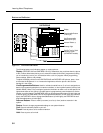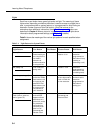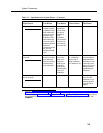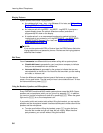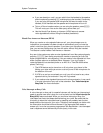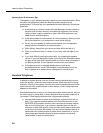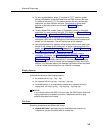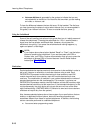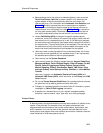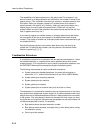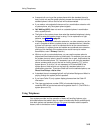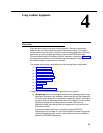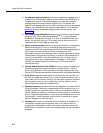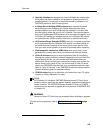
Learning About Telephones
3-10
■
Intercom dial tone
is generated by the system to indicate that you are
connected with an inside line. You hear this dial tone when you are making
an inside, or
intercom
, call.
To hear the difference between the two dial tones, lift the handset. The dial tone
you hear (assuming the phone is set to select intercom first, as recommended in
this guide) is an intercom dial tone. To hear an outside dial tone, press
9.
Using the Switchhook
Some of the call-handling instructions in this guide direct you to “rapidly press and
release the switchhook.” Pressing the switchhook for 1/2 to 1 second sends a
signal over the line called a
switchhook flash
. However, do not press the
switchhook
too
quickly. If you press the switchhook and nothing happens, try
again and press it a
little
longer.
NOTE:
If your feature phone has a button labeled “Recall” or “Flash,” use the button
instead of pressing the switchhook. If you use the system with PBX or
Centrex lines, your PBX or Centrex documentation may tell you to press the
switchhook to access PBX or Centrex features. Use the Recall feature
instead [see "Recall (F03)"].
Limitations
Each standard device requires one touch-tone receiver to be available in order to
dial a call (intercom or outside) or to activate a feature using a code. Each
PARTNER ACS processor module has two touch-tone receivers; each 206
module has one touch-tone receiver; each 400 module has two touch-tone
receivers. The combination of modules in your system determines the number of
standard devices that can dial simultaneously. For example, if you have one
PARTNER ACS processor module, two 206 modules, and two 400 modules, eight
standard devices can dial out at the same time. If nine standard devices try to dial
out simultaneously, the ninth device will not get dial tone until one of the other
eight finishes dialing. (PARTNER MAIL VS contains its own touch-tone receivers
and does not require any from the system.)
Also, because standard phones do not have system line or pool buttons, feature
buttons, or dedicated function buttons, basic call-handling procedures are
sometimes different from those for system telephones. In addition, the following
actions
cannot
be performed at a standard telephone:
■ You cannot enter programming mode.



